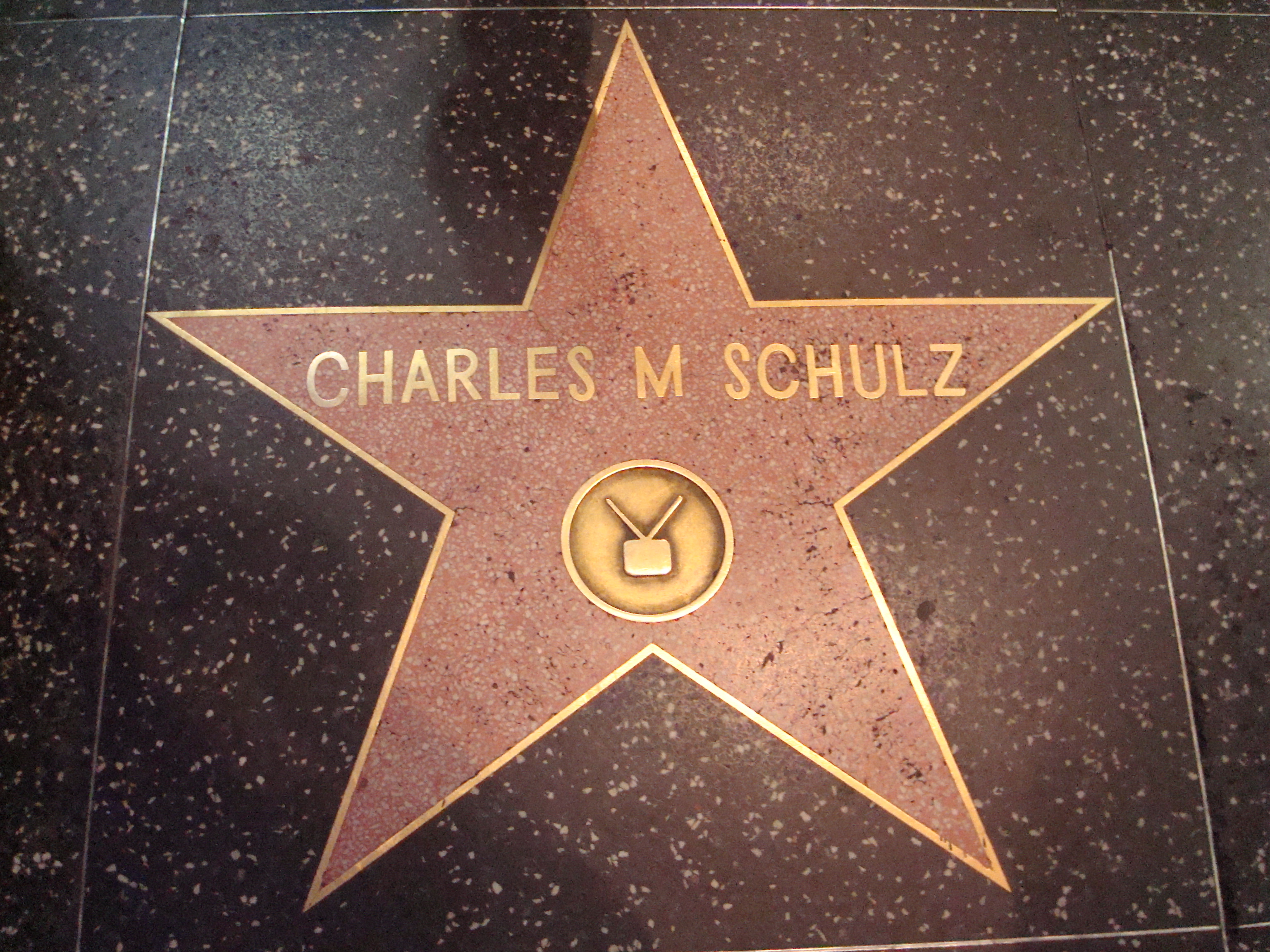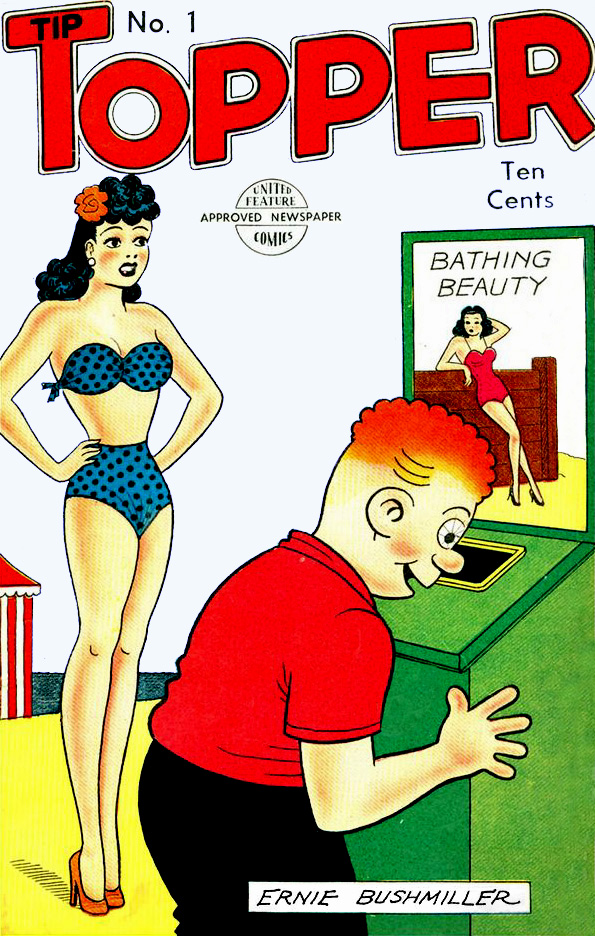|
Peanuts
''Peanuts'' is a print syndication, syndicated daily strip, daily and Sunday strip, Sunday American comic strip written and illustrated by Charles M. Schulz. The strip's original run extended from 1950 to 2000, continuing in reruns afterward. ''Peanuts'' is among the most popular and influential in the history of comic strips, with 17,897 strips published in all, making it "arguably the longest story ever told by one human being". At the time of Schulz's death in 2000, ''Peanuts'' ran in over 2,600 newspapers, with a readership of around 355 million in 75 countries, and was translated into 21 languages. It helped to cement the Yonkoma, four-panel gag strip as the standard in the United States, and together with its merchandise earned Schulz more than $1 billion. ''Peanuts'' focuses entirely on a social circle of young children, where adults unseen character, exist but are never seen and rarely heard. The main character, Charlie Brown, is meek, nervous, and lacks self-c ... [...More Info...] [...Related Items...] OR: [Wikipedia] [Google] [Baidu] |
Charlie Brown
Charles "Charlie" Brown is the principal character of the comic strip ''Peanuts'', syndicated in daily and Sunday newspapers in numerous countries all over the world. Depicted as a "lovable loser," Charlie Brown is one of the great American archetypes and a popular and widely recognized cartoon character. Charlie Brown is characterized as a person who frequently suffers, and as a result, is usually nervous and lacks self-confidence. He shows both pessimistic and optimistic attitudes: on some days, he is apprehensive to even go outside because his day might just be spoiled, but on others, he hopes for the best and tries as much as he can to accomplish things. He is easily recognized by his trademark zigzag patterned shirt. The character's creator, Charles M. Schulz, said that Charlie Brown "must be the one who suffers because he is a caricature of the average person. Most of us are much more acquainted with losing than winning." Despite this, Charlie Brown does not always suffer ... [...More Info...] [...Related Items...] OR: [Wikipedia] [Google] [Baidu] |
Snoopy
Snoopy is an anthropomorphic beagle in the comic strip ''Peanuts'' by Charles M. Schulz. He can also be found in all of the ''Peanuts'' films and television specials. Since his debut on October 4, 1950, Snoopy has become one of the most recognizable and iconic characters in the comic strip and is considered more famous than Charlie Brown in some countries. The original drawings of Snoopy were inspired by Spike, one of Schulz's childhood dogs. Traits Snoopy is a loyal, imaginative, and good-natured beagle who is prone to imagining fantasy lives, including being an author, a college student known as "Joe Cool", an attorney, and a World War I flying ace. He is perhaps best known in this last persona, wearing an aviator's helmet and goggles and a scarf while carrying a swagger stick (like a stereotypical British Army officer of World War I and World War II, II). Snoopy can be selfish, gluttonous and lazy at times, and occasionally mocks his owner, Charlie Brown. But on the whole, ... [...More Info...] [...Related Items...] OR: [Wikipedia] [Google] [Baidu] |
A Charlie Brown Christmas
''A Charlie Brown Christmas'' is a 1965 animated television special. It is the first TV special based on the comic strip ''Peanuts'', by Charles M. Schulz. Produced by Lee Mendelson and directed by Bill Melendez, the program made its debut on CBS on December 9, 1965. In the special, Charlie Brown finds himself depressed despite the onset of the cheerful holiday season. Lucy suggests he direct a neighborhood Christmas play, but his best efforts are ignored and mocked by his peers when he chooses a real, but puny, Christmas tree as a centerpiece. After the comic strip's debut in 1950, ''Peanuts'' had become a phenomenon worldwide by the mid-1960s. The special was commissioned and sponsored by The Coca-Cola Company, and was written over a period of several weeks, and produced on a small budget in six months. In casting the characters, the producers took an unconventional route, hiring child actors. The program's soundtrack was similarly unorthodox, featuring a jazz score by pianis ... [...More Info...] [...Related Items...] OR: [Wikipedia] [Google] [Baidu] |
Peppermint Patty
Peppermint Patty is a fictional character featured in Charles M. Schulz's comic strip ''Peanuts''. Her full name is Patricia Reichardt, which is very rarely used in the strip. She is one of a small group in the strip who live across town from Charlie Brown and his school friends (although in ''The Peanuts Movie'', ''Snoopy in Space'', and '' The Snoopy Show'' she, Marcie, and Franklin live in the same neighborhood and attend the same school). She has freckles and "mousy-blah" hair, and generally displays the characteristics of a tomboy, although she also demonstrates an obsession with the smaller things in life. She made her first appearance on August 22, 1966. The following year she made her animated debut in the TV special ''You're in Love, Charlie Brown'' and began (in the comics) coaching a baseball team that played against Charlie Brown, and thereafter had other adventures with him. Uniquely, she refers to Charlie Brown and Lucy as "Chuck" and "Lucille", respectively. In mo ... [...More Info...] [...Related Items...] OR: [Wikipedia] [Google] [Baidu] |
It's The Great Pumpkin, Charlie Brown
''It's the Great Pumpkin, Charlie Brown'' is a 1966 American prime time animated television special based on the comic strip ''Peanuts'' by Charles M. Schulz. A Halloween special, it was the third ''Peanuts'' special (and second holiday-themed special, following '' A Charlie Brown Christmas'') to be produced and animated by Bill Melendez. The special features music composed by jazz pianist Vince Guaraldi, whose contributions include the theme song "Linus and Lucy". It was also the first ''Peanuts'' special whose title used the pattern of a short phrase followed by "Charlie Brown", a pattern which remained the norm for almost all subsequent ''Peanuts'' specials. Its initial broadcast took place on October 27, 1966 on CBS, preempting ''My Three Sons'', and tied '' Bonanza'' as the No. 1 broadcast in that week's Nielsen TV ratings. The original sponsors were Coca-Cola (which had been the original sponsor of ''A Charlie Brown Christmas'') and the Dolly Madison brand of baked snack ... [...More Info...] [...Related Items...] OR: [Wikipedia] [Google] [Baidu] |
Franklin (Peanuts)
Franklin is a fictional character in the comic strip ''Peanuts'', created by Charles M. Schulz. Introduced on July 31, 1968, Franklin was the first African American character in the strip. He goes to school with Peppermint Patty and Marcie. In his first story arc, he met Charlie Brown when they were both at the beach. Franklin's father was a soldier fighting in Vietnam, to which Charlie Brown replied "My dad's a barber... he was in a war too, but I don't know which one." Franklin later paid Charlie Brown a visit and found some of Charlie Brown's other friends to be quite odd. His last appearance was in 1999, the year before Schulz's death. Publication A Los Angeles schoolteacher named Harriet Glickman wrote to Schulz on April 15, 1968 (eleven days after the Assassination of Martin Luther King Jr.), urging him to introduce a black character into ''Peanuts''. On April 26, Schulz wrote back, saying that he had thought about this, but was afraid of "patronizing our Negro friends." ... [...More Info...] [...Related Items...] OR: [Wikipedia] [Google] [Baidu] |
Woodstock (Peanuts)
Woodstock is a fictional character in Charles M. Schulz's comic strip ''Peanuts''. He is a small yellow bird and Snoopy's best friend. The character first appeared in the April 4, 1967, strip, though he was not officially named until June 22, 1970. He is named after the Woodstock festival of 1969. History In the early 1960s, Snoopy began befriending birds when they started using his doghouse for various occasions: a rest stop during migrations, a nesting site, a community hall, or a place to play cards. None of these birds was ever given a name, although they did, on occasion (e.g., July 10, 1962), use speech balloons, lettered in what would become the classic 'chicken scratch marks' of Woodstock's utterances. What set Woodstock apart from all these earlier birds was the fact that he attached himself to Snoopy and assumed the role of Snoopy's sidekick and assistant. There had been no recurring relationships between Snoopy and the earlier birds who visited the yard of the Browns, a ... [...More Info...] [...Related Items...] OR: [Wikipedia] [Google] [Baidu] |
Peanuts Animated Specials
The successful comic strip ''Peanuts'', by Charles M. Schulz, was adapted into 46 animated specials since 1965, most of them released on television. This article describes the history of these programs, including notable sponsors, directors, and voice actors. History In the strip, adult voices are heard, though conversations are usually only depicted from the children's end. To translate this aspect to the animated medium, the sound of a trombone with a solotone mute (created by Vince Guaraldi played by Dean Hubbard. Eight ''Peanuts''-based specials have been made posthumously. Of these, three are tributes to ''Peanuts'' or other ''Peanuts'' specials, and five are completely new specials based on dialogue from the strips and ideas given to ABC by Schulz before his death. ''He's a Bully, Charlie Brown'', was telecast on ABC on November 20, 2006, following a repeat broadcast of ''A Charlie Brown Thanksgiving''. Airing 43 years after the first special, the premiere of ''He's a Bul ... [...More Info...] [...Related Items...] OR: [Wikipedia] [Google] [Baidu] |
Sally Brown
Sally Brown is a fictional character in the comic strip ''Peanuts'' by Charles Schulz. She is the younger sister of main character Charlie Brown. She was first mentioned in May 1959 and throughout a long series of strips before her first appearance in August 1959. Cathy Steinberg was the first to voice Sally in 1965 for the CBS special '' A Charlie Brown Christmas''; she was six years old at the time. History Sally was born on May 26, 1959, with Charlie Brown receiving a telephone call from the hospital and dashing out of the house yelling that he had a new baby sister. She was given the name "Sally" on June 2, 1959. Although Sally was often talked about and was the cause for a celebration that included Charlie Brown passing out chocolate cigars, it was not until August 23, 1959 that she finally made her first appearance in the strip. Like other characters, such as Linus and Schroeder (who were also introduced to the strip as babies), Sally grew up quickly. The week of August 22 ... [...More Info...] [...Related Items...] OR: [Wikipedia] [Google] [Baidu] |
Comic Strip
A comic strip is a sequence of drawings, often cartoons, arranged in interrelated panels to display brief humor or form a narrative, often serialized, with text in balloons and captions. Traditionally, throughout the 20th and into the 21st century, these have been published in newspapers and magazines, with daily horizontal strips printed in black-and-white in newspapers, while Sunday papers offered longer sequences in special color comics sections. With the advent of the internet, online comic strips began to appear as webcomics. Strips are written and drawn by a comics artist, known as a cartoonist. As the word "comic" implies, strips are frequently humorous. Examples of these gag-a-day strips are '' Blondie'', ''Bringing Up Father'', ''Marmaduke'', and ''Pearls Before Swine''. In the late 1920s, comic strips expanded from their mirthful origins to feature adventure stories, as seen in ''Popeye'', ''Captain Easy'', ''Buck Rogers'', ''Tarzan'', and ''Terry and the Pira ... [...More Info...] [...Related Items...] OR: [Wikipedia] [Google] [Baidu] |
PBS Kids
PBS Kids is the brand for most of the children's programming aired by the Public Broadcasting Service (PBS) in the United States. Some public television children's programs are not produced by PBS member stations or transmitted by PBS. Instead, they are produced by independent public television distributors such as American Public Television, and are not labeled as "PBS Kids" programming, as it is mainly a programming block branding. The target audience is children between the ages of 2 and 8. The network is also available in sub-Saharan Africa and Australia. History PTV block PBS had historically aired programs for children such as ''Sesame Street'', ''Mister Rogers' Neighborhood'', and ''Reading Rainbow''; prior to 1993, these programs aired under general PBS branding. In August 1993, PBS introduced new branding for their children's programs featuring "The P-Pals", animated characters shaped like PBS logos who encouraged skills such as gathering information, self-esteem, co ... [...More Info...] [...Related Items...] OR: [Wikipedia] [Google] [Baidu] |
United Feature Syndicate
United Feature Syndicate (UFS) is a large American editorial column and comic strip newspaper syndication service based in the United States and established in 1919. Originally part of E. W. Scripps Company, it was part of United Media (along with the Newspaper Enterprise Association) from 1978 to 2011, and is now a division of Andrews McMeel Syndication. United Features has syndicated many notable comic strips, including ''Peanuts'', ''Garfield'', ''Li'l Abner'', ''Dilbert'', ''Nancy (comic strip), Nancy'', and ''Marmaduke''. History United Feature Syndicate was formed in 1919.Booker, M. Keith. "United Feature Syndicate," in ''Comics through Time: A History of Icons, Idols, and Ideas'' (ABC-CLIO, 2014), p. 399."United Feature Syndicate Buys Metropolitan Service From Elser: Both Firms Will Retain Separate Identities, With Elser Remaining as Vice-President — Monte Bourjaily to Direct Both Organizations," ''Editor & Publisher'' (March 15, 1930). Archived a"News of Yore 1930: Anoth ... [...More Info...] [...Related Items...] OR: [Wikipedia] [Google] [Baidu] |





.jpg)
